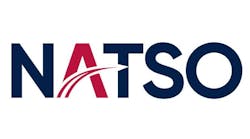Oh, the stimulus funds are flowing and the grant breezes are blowing. All that money drifting about this summer has many carriers thinking about using some of it to upgrade their fleets by retrofitting older vehicles to make them more fuel efficient and cleaner, too. In fact, thanks to federal stimulus dollars you can get up to 75% of the cost of a new engine.
Through the National Clean Diesel Funding Assistance Program, the Environmental Protection Agency (EPA) is awarding some $300 million for projects to reduce diesel emissions, including retrofit devices, engine upgrades certified engine repowering and other measures. For the right kinds of vehicles in the right applications, retrofits can be one of the most cost-effective paths to a more fuel efficient, cleaner operation, but they are not for every old truck.
According to Allen Schaeffer, executive director of the non-profit Diesel Technology Forum, there is “definitely a sweet spot where retrofit makes sense. “It just doesn’t pay to try to retrofit some of the oldest trucks with naturally-aspirated engines, for example,” he says, “ but if you have a used truck with some life left in it, repowering it can give you better fuel economy, lower maintenance costs, improved performance and reduce emissions, as well.”
To help fleets and drivers decide if retrofitting existing equipment makes sense for their operation, Schaeffer offers a short checklist to get the decision process started:
- Why are you considering retrofitting your vehicle(s)? Is it a requirement because of where you operate? Are you hoping to reduce fuel costs or delay buying new equipment a little longer to conserve capital? Do you want a “greener” fleet? Your reasons for retrofitting will drive your technology choices.
- Are you expecting to get financial support for the retrofit from one of the federal or state-level grant or tax credit programs? Do you know that you will qualify for the funding?
- What equipment do you have? Will you be able to operate it long enough to realize a return on your investment in repowering, or will other components fail before you reach the payback point?
- What is the duty cycle for your equipment? Is it home every night or on the road for days at a time?
- How do you handle maintenance?
The stimulus money available now represents a once-in-a-lifetime opportunity, according to Schaeffer, who notes that every dollar invested in upgrading an older vehicle returns $13 in public health and other benefits. Not a bad ROI at all.


